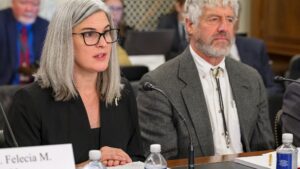Funding Remains Critical to Future Research Projects
Societal challenges spur an uptick in available research dollars, but the competition is fierce.
During the past decade, there’s been a growing concern from the university and research community about the future of science and innovation due to a lack of federal funding. The budget deficit and economic downturn in 2008 certainly didn’t do anything to help.
According to the Organisation for Economic Co-operation and Development, the percentage of U.S. gross domestic expenditure on research and development funded by the government declined from 47.1 percent in 1982 to 33.4 percent in 2011, which means the U.S. trails nine OECD nations in this percentage. While U.S. research and development declined, global R&D investments increased 1.8 percent to $1.496 trillion, according to the “2013 Global R&D Funding Forecast” sponsored by Batelle. Additionally, data from the National Science Foundation shows that during the past 10 years, R&D expenditures as a share of economic output have remained nearly constant in the U.S., but have increased by nearly 50 percent in South Korea and nearly 90 percent in China.
So what do these numbers mean? The Association of Public and Land-Grant Universities call it an “innovation deficit: the widening gap between the actual level of federal funding for research and higher education and what that investment needs to be if the United States is to remain the world’s leader.”
Research funded by the National Science Foundation, the National Institutes of Health, NASA, and the Departments of Defense, Energy, Agriculture and Commerce has led to life-saving vaccines, lasers, MRIs, touch screens, GPS and even the Internet. More than half of America’s economic growth in recent decades has been thanks to innovation, much of which resulted from federally-funded scientific research. Innovation has made the U.S. the leading economic power in the world.
But scientists and business leaders agree that a growing deficit means the U.S. could lose its lead in science and technology. America’s investments in research and education are now flat or declining, while others such as China, Singapore, Korea and others in the EU are dramatically increasing their funding in those areas.
Collaboration Sustains
Due to funding cutbacks, many research institutions have had to find new and innovative ways during the past few years to continue their research projects and many believe they have forged new paths to maintain critical funding for projects today and well into the future, and it’s called collaboration.
Research remains a crucial building block on the road to new and innovative technologies making their way to the marketplace, and many U.S. organizations and institutions are committed to ensuring this continues to happen.
The University of Georgia has witnessed many changes during the past decade and not all have been good. Cutbacks have occurred not only in ongoing project funding, but also in staff resources. However, a sense of change might be in the air.
“Funding investments, particularly by the U.S. Department of Agriculture, in the past few years have been increasing, and this is very good news,” says Harald Scherm, University of Georgia professor of plant pathology and assistant dean for research. “I feel like we might be turning a corner. During the past decade, many universities witnessed a decline in funding, but we have also forged new paths to continue our work through collaborations at the university level, as well as through private and public partnerships.”
Scherm believes that collaboration on research projects is a step in the right direction to better use funding. He says the notion of collaboration has changed the way University of Georgia scientists conduct business. “We look to other state universities conducting similar research to see if there is a way to collaborate and better use funding dollars for both institutions,” Scherm says. “In many projects, this works well within the parameters of sharing research.”
Leaders Assess the Needs
The need for funding remains greater than ever, says Sonny Ramaswamy, director of USDA’s National Institute of Food and Agriculture. This need applies to agricultural and seed research, but also other research disciplines including childhood obesity, food security and food production, he explains.
According to a recent report published April 2014 by the International Food Policy Research Institute (IFPRI) titled, “Public-Sector Agriculture Research Priorities for Sustainable Food Security,” the ability to deliver sustainable food security will be challenged by population growth, constrained natural resources and climate change. The report stresses, “As population and income growth and climate change place pressure on our ability to feed the world sustainably, investments in agricultural productivity are essential to dealing with these challenges.”
“We try to address the critical needs of today, as well as provide the tools that producers will need in the next three to five years and even five to 10 years down the road,” Ramaswamy says. “The needs of today can be quite different from what the needs in the marketplace will be in five to 10 years. At NIFA, we are always asking what can we do better to prioritize the needs of the future.”
Funding made available by NIFA is decided based on the priorities the agency has proposed for the year. “For example, in 2014 we have a competition for water, which we will invest $30 million over five years,” Ramaswamy says. “The priorities vary from year to year, but thematically we are investing in ‘societal challenges’ such as food security, climate, water, obesity and nutrition, food safety and sustainable bioenergy. We are also investing in the fundamental food and agricultural sciences and education for the future.”
Both Scherm and Ramaswamy agree that developing a firm strategic direction and remaining focused are key to advancing future research projects that will make a difference in the U.S. and around the world.
“Determining strategic direction is key to accomplishing a return on investment,” Ramaswamy says. NIFA’s planning process starts at the top with Congress, the President of the United States and the secretary of USDA. From this point, NIFA expands its process to the Federal Register and hosts listening sessions with various associations representing entomologists, plant breeders and producers throughout the U.S.
“It’s crucial to address the needs of all sectors of the agricultural community from the bottom up and from the top down,” Ramaswamy explains. “It’s at this point that a strategic direction can be formed.”
Allen Van Deynze, director of research at the University of California’s Seed Biotechnology Center, says that strict focus is key to future research. “It’s an ongoing process and it’s one that you have to be 10 years ahead of,” he says. At the university level, Van Deynze remains focused on the needs of today and the future by talking regularly with those in the industry, which includes other research institutions, seed companies, seed developers and growers. “It’s important to have a target, but in order to reach that target you must know your market.”
Fierce Competition for Funding
Van Deynze agrees that continued funding is critical. With concerns of climate change, drought-stress and the ever-growing disease and weed tolerant problems, he says the need for future funding and grants made available to the scientific community has also increased. “We always have to be one grant ahead,” Van Deynze says. “We need to think ahead to what will be innovative and beneficial in 10 years.”
But Van Deynze says that funding for research has not grown at the same pace as the need for research. “When applying for a grant these days, we are usually one of 100 or one of 200 … and sometimes it’s the luck of the draw on being awarded a grant,” he says.
Georgia’s Scherm agrees. “We have become very talented at writing proposals,” he says. “It has become a necessity in terms of furthering future research.”
It is a very selective process for those in need of funding, states Van Deynze. While funding dollars might seem harder to come by in the competitively growing world of research, private sector funding has become an alternative in finding additional investment dollars. “You cannot count on funding from one sector alone, such as the USDA, to develop all of the new technologies that will be needed down the road,” Van Deynze says.
Scherm notes that private and public partnerships are vital to future research and investment at the university level. “As we have had to consolidate during the past few years, those in the seed, plant and genetics research fields have found valuable partnerships with private institutions, such as breeding and genetics companies to help fund our research capabilities,” Scherm says.
The World Benefits
This funding by both the private and public sectors doesn’t just benefit one area, but affects all citizens of the world. Researchers are working to solve the world’s challenges.
A recent report by IFPRI states, “Productivity increases will be essential, as will increased resilience to extreme events, particularly higher temperature and more variability in rainfall. These outcomes will need to come from some combination of improvements of the plant and animal genetic material used by farmers, both new material and much better dissemination of existing material and the management practices that are needed to take advantage of it. Both types of activities require new resources and, in many cases, changes in public policy. For some food sources, the private sector will see a financial incentive to invest in the needed productivity and resilience enhancements. But in many parts of the developing world, additional public-sector investments, both national and international, will be required.”
To address the above challenges, USDA’s NIFA remains committed to focus its resources on supporting programs that provide foundational knowledge, as well as programs that will create substantial impacts by addressing critical issues that impact the long-term viability of agriculture.
“There is always the need to put food on the table so agricultural research is key, but we also have to think of the externalities,” Ramaswamy says. “Obesity and cardiovascular disease in our population is a growing concern. Also of concern is the onslaught of more diseases affecting plant growth and how climate change might affect the profile of wheat, which could constrain future food production and impact the nutritional quality of wheat in five to 10 years. It’s these issues that need to be addressed today for the future.”
While some say the future is to be determined, scientists and researchers are collaborating and working to pave that path — to solve the challenges ahead. America’s future prosperity and national security depend on it.
Shannon Schindle














